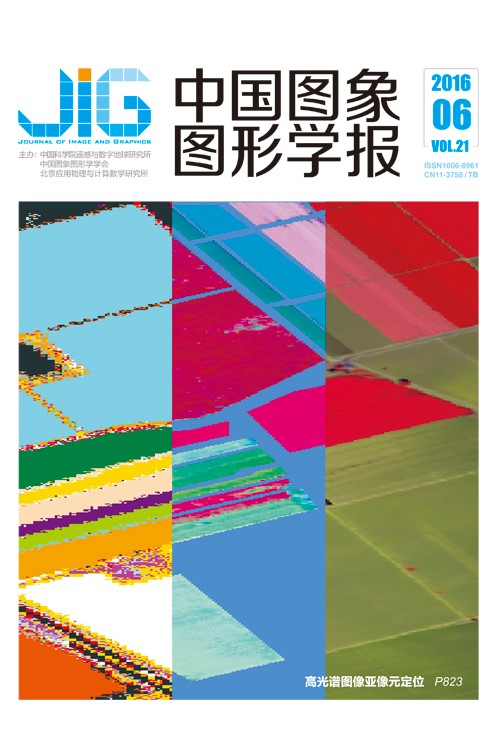
多重约束下的近景影像线特征匹配方法
摘 要
目的 针对影像匹配时提取特征线断裂而影响匹配结果及可靠性的问题,提出多重约束条件下的近景影像线特征匹配方法。方法 首先,采用SIFT算法获取同名点,并使用RANSAC算法进行优化,通过同名点计算仿射变换矩阵;建立格网点,利用仿射变换、Harris兴趣值及最小二乘法提高密集匹配结果的精度;其次,采取Freeman链码优先级算法提取直线,根据搜索区域内密集匹配点与直线位置关系完成特征线的初始匹配;最后通过线段重合度对初始匹配结果进行优化,并利用核线约束确定同名直线端点。结果 选取存在旋转、尺度、遮挡的近景影像进行线特征匹配实验,结果表明,与其他直线匹配方法相比,本文方法不仅在直线匹配成功数目上约为经典算法的1.07~4.1倍,而且直线匹配正确率也提升0.6%~53.3%,具有较好的准确性和鲁棒性。结论 通过多重约束有效地减小了立体影像中线特征匹配时的搜索范围,提高了直线匹配速率,且该方法适用于不同类型几何变化下的近景影像数据,并能较好地改善直线断裂及遮挡问题。
关键词
Line feature matching method based on multiple constraints for close-range images
Song Weidong1, Zhu Hong1, Wang Jingxue1, Liu Yuxuan2(1.School of Geometrics, Liaoning Technical University, Fuxin 123000, China;2.Geographic Space Information Institute, Information Engineering University, Zhengzhou 450000, China) Abstract
Objective Given that the fracture situation affects the results and reliability of straight line matching, a new line matching method for close-range images under multi-conditions is proposed. Method First, the initial corresponding points are obtained using the scale-invariant feature transform algorithm and are optimized by random sample consensus. The affine transform matrix is computed based on the final corresponding points. The dense matching accuracy is improved through affine transform, Harris interest value, and least square method based on the constructed points. Second, the lines are extracted using the Freeman chain code priority algorithm, and the initial matching results are obtained based on the position relationship between the dense matching points and the lines in the searching area. Third, the initial corresponding lines are optimized by the line coincidence degree, and the endpoints of the extracted lines are determined under epipolar constraint. Results A set of close-range images that contain rotation, scale change, and occlusion are used in line extraction experiments. The experiment results show that, compared with other line matching methods, the proposed method successfully matches 1.07 to 4.1 times more lines and improves the accuracy of straight line matching by 0.6% to 53.3%. The proposed method also outperforms the existing methods in terms of accuracy and robustness. Conclusion By setting multi-conditions, the searching area of line features is effectively decreased in stereo image matching, thereby significantly improving the matching efficiency. Experiments are performed on close-range images under different geometric transformations. The proposed method can be used to solve line break and occlusion problems.
Keywords
|



 中国图象图形学报 │ 京ICP备05080539号-4 │ 本系统由
中国图象图形学报 │ 京ICP备05080539号-4 │ 本系统由